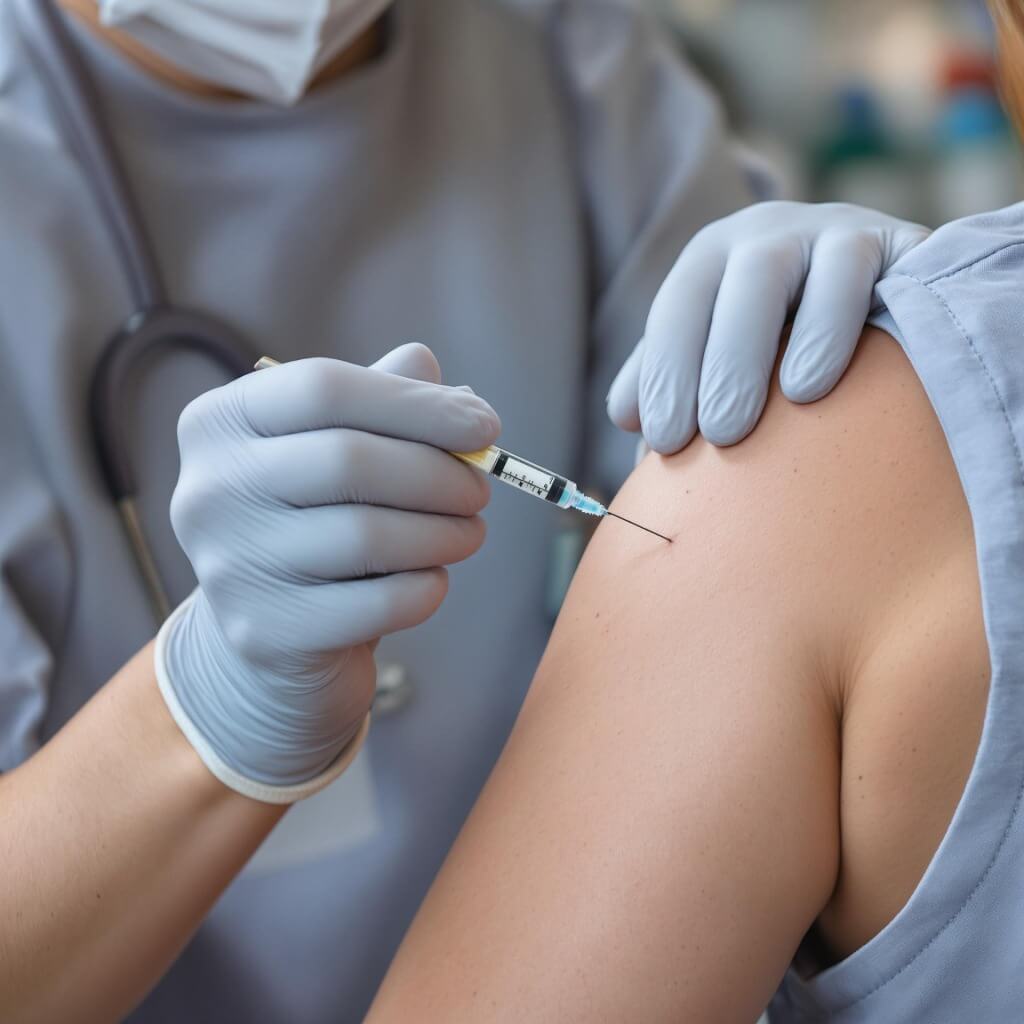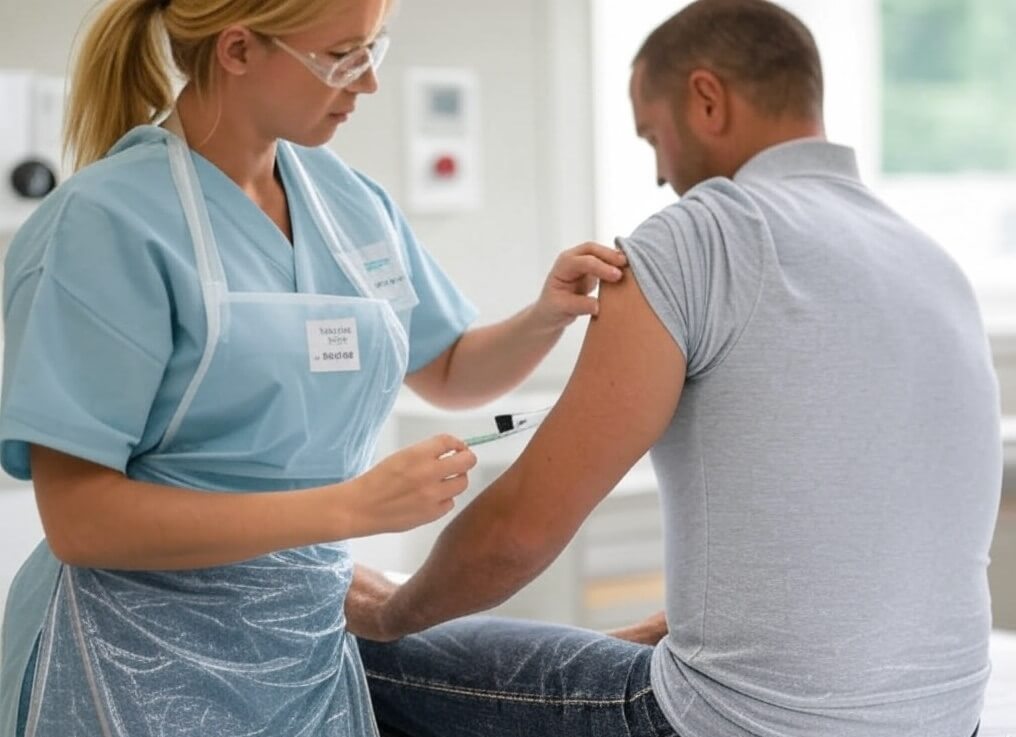Comprehensive Guidelines
Intramuscular injections are a fundamental nursing skill, essential for administering medications directly into muscle tissue. This comprehensive guide delves into the intricacies of IM injections, offering detailed insights into techniques, site selection, and safety protocols. Whether you’re a seasoned nurse or a healthcare student, understanding these guidelines ensures effective patient care and optimal therapeutic outcomes.
 What Is an Intramuscular Injection?
What Is an Intramuscular Injection?
An intramuscular injection involves delivering medication deep into the muscle tissue, allowing for rapid absorption into the bloodstream. This method is preferred when oral administration is not feasible or when medications are better absorbed through muscle tissue. The rich blood supply in muscles facilitates quicker therapeutic effects compared to subcutaneous injections.
Why Are Intramuscular Injections Administered?
IM injections are utilized for various reasons:
- Medication Delivery: Certain drugs, such as vaccines, hormones, and antibiotics, require intramuscular administration to achieve desired blood concentrations.
- Rapid Onset: Medications injected into muscles are absorbed faster than those given subcutaneously, making IM injections ideal for treatments needing prompt effects.
- Volume Accommodation: Muscles can hold larger volumes of medication compared to subcutaneous tissue, accommodating doses up to 5mls in adults.
Anatomy of Common Intramuscular Injection Sites
Selecting the appropriate injection site is crucial for efficacy and safety. Common sites include:
- Deltoid Muscle (Upper Arm): Located on the upper arm, it’s suitable for small-volume injections, such as vaccines. To locate, palpate the acromion process and inject into the muscle approximately 2.5-5 cm below.
- Vastus Lateralis (Thigh): Situated on the outer anterolateral aspect of the thigh, it’s ideal for self-administration and in children under three years. The injection is given into the middle third of the muscle.
- Ventrogluteal (Hip): Preferred for larger volumes and viscous medications due to its muscle mass. To landmark this site, place the heel of your hand on the greater trochanter of the femur, with fingers pointing towards the superior iliac spine, forming a V with the index and middle fingers. Inject into the center of the triangle.
- Dorsogluteal (Buttock): Once common, its use has declined due to the risk of sciatic nerve injury. If used, ensure proper landmarking to avoid major blood vessels and nerves.
How to Choose the Appropriate Needle and Syringe
Selecting the correct needle and syringe is vital:
- Needle Length and Gauge: Depends on the patient’s age, size, and the injection site. Adults typically require a 22-25 gauge needle, 1-1.5 inches long. Children may need shorter needles.
- Syringe Size: Should match the medication volume. For adults, up to 5mls can be administered intramuscularly; in children, up to 3mls.
Step-by-Step Guide to Administering an IM Injection
- Preparation:
- Wash hands thoroughly.
- Assemble the syringe and needle, ensuring sterility.
- Draw the prescribed medication into the syringe, removing air bubbles.
- Site Selection and Positioning:
- Choose the appropriate injection site based on the medication and patient factors.
- Position the patient comfortably, ensuring the muscle is relaxed. For the ventrogluteal site, the patient can be positioned lying on their side; for the vastus lateralis, lying on their back or sitting.
- Administration:
- Clean the injection site with an alcohol swab.
- Stretch the skin taut.
- Insert the needle into the muscle at a 90-degree angle with a quick, firm thrust.
- Aspirate (pull back the plunger slightly) to check for blood; if blood appears, withdraw and prepare a new injection.
- If no blood, inject the medication slowly and steadily.
- Withdraw the needle swiftly and apply gentle pressure with a piece of gauze.
How to Give Yourself an Intramuscular Injection
Self-administration requires careful technique:
- Site Selection: The vastus lateralis (thigh) is often recommended for self-injection due to its accessibility.
- Preparation: Follow the same preparation steps as above.
- Administration:
- Sit comfortably with the thigh exposed.
- Locate the middle third of the vastus lateralis muscle.
- Clean the site, stretch the skin, and insert the needle at a 90-degree angle.
- Inject the medication slowly, withdraw the needle, and apply pressure.
Recognizing and Managing Potential Complications
Awareness of possible complications ensures prompt management:
- Pain and Swelling: Mild discomfort is common. Apply a cold compress post-injection to reduce swelling.
- Infection: Signs include redness, warmth, and pus at the injection site. Maintain strict aseptic technique to prevent this.
- Allergic Reactions: Watch for hives, itching, or difficulty breathing. In case of severe reactions, seek immediate medical attention.
- Sciatic Nerve Injury: Particularly associated with dorsogluteal injections. Proper site selection and technique are crucial to avoid this.
Proper Disposal of Used Syringes and Needles
Safe disposal prevents injury and infection:
- Use Sharps Containers: Immediately place used syringes and needles into a puncture-resistant sharps container.
- Do Not Recap Needles: To prevent accidental needle sticks.
- Follow Local Regulations: Dispose of sharps containers according to local guidelines, which may involve returning them to a healthcare facility or designated drop-off points.
When to Call the Doctor After an IM Injection
Contact a healthcare provider if:
- Severe Pain or Swelling: Especially if it worsens over time.
- Signs of Infection: Such as increased redness, warmth, or discharge at the injection site.
- Allergic Reactions: Including rash, itching, or difficulty breathing.
- Persistent Bleeding: That doesn’t stop with pressure.
Frequently Asked Questions About Intramuscular Injections
Q: Can I reuse needles or syringes?
A: No, always use a new, sterile needle and syringe for each injection to prevent infection.
Q: Is it normal to have a lump at the injection site?
A: A small, temporary lump can occur due to localized swelling. It should resolve on its own. If it persists or is painful, consult a healthcare provider.
Q: How can I reduce pain during an injection?
A: Ensure the muscle is relaxed, use a swift needle insertion technique, and inject the medication slowly.








